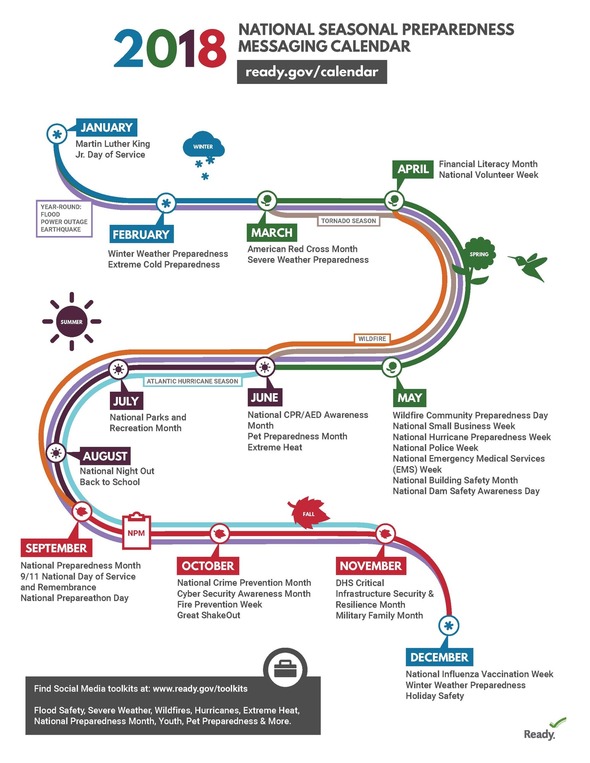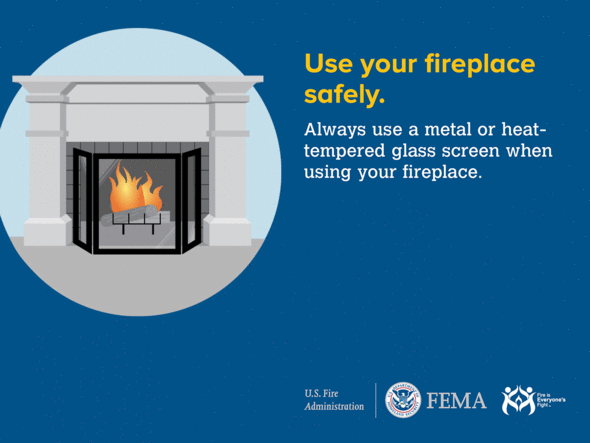|
FEMA recently released the
Tribal Mitigation Plan Review Guide (Guide). Effective
next December, the Guide will be FEMA's official policy on tribal mitigation
planning requirements and will supersede the Tribal Multi-Hazard Mitigation
Planning Guidance issued in 2010. The underlying regulatory requirements for
tribal mitigation planning in 44 CFR
Part 201 have not changed.
Tribal mitigation plans
are community-driven, living documents that tribal governments use to
strengthen and protect their land and people from the negative impact of
natural events like floods and wildfires. They are a pre-requisite for certain
kinds of non-emergency disaster assistance.
FEMA engaged tribal
governments throughout the development of the Guide, including tribal
consultations in 2016 and 2017. These consultations yielded over 350 comments
from federally-recognized tribes and other interested parties. The result of
the update is a more streamlined document that provides greater clarity
regarding FEMA mitigation planning requirements. This update will facilitate
tribal governments' successful development and adoption of mitigation plans.
FEMA will hold a national
webinar on the updated policy on January 23, 2018 at 4:00 PM Eastern
Standard Time (EST) to provide more information to tribal governments about
the updated policy. Additional outreach will be completed through the FEMA
Regions.
The 2010 Tribal
Multi-Hazard Mitigation Planning Guidance is still in effect until December
2018. As a reference, the 2018 Tribal Guide is available in the
FEMA library. For more information on the Guide or the outreach webinar,
please contact your Regional
Tribal Liaison or the Regional
Mitigation Planning Lead in your Region.
The 2018 National Seasonal Preparedness Messaging Calendar and key messages provides content to promote preparedness all year. For more information, visit www.ready.gov/calendar.

The unprecedented number of major disaster incidents
Americans are encountering is bringing heightened focus on the importance of
emergency public information. FEMA’s public information officer (PIO) curriculum
plays a key role in meeting the training needs of those tasked with critical
message delivery.
FEMA’s Emergency
Management Institute (EMI) is offering the Advanced Public Information Officer
(PIO) course, February 12-16, 2018 at the National Emergency Training Center in
Emmitsburg, Maryland. The course provides public information officers the
opportunity to increase their knowledge and skills for establishing, managing
and working in a joint information center (JIC). The training fosters an
environment where participants can apply advanced skills during a multi-day
functional exercise designed to test and enhance their ability to analyze,
coordinate, process, and create information in a fast-paced, realistic
environment.
Using
interactive lectures from subject matter experts and an intense functional
exercise, the Advanced PIO course teaches participants skills for use during
escalating incidents, including strategic communications and incident action
planning, as it relates to JIC operations.
Interested
individuals should contact the National Emergency Training Center Admissions
Office at (301) 447-1035 or netcadmissions@fema.dhs.gov by January 1, 2018,
to register for the course. For information on prerequisites and course
schedules, go to http://training.femac.gov/programs/pio/.
According to the U.S. Fire Administration,
home fires occur more often in winter. Space heaters cause about
one-third of the heating fires and four out of five heating fire deaths. Be
fire smart this winter by following these safety heating tips.
When
using heaters that require fuel, make sure you have a carbon monoxide
detector. Carbon monoxide is called the “invisible killer” because it's a
colorless, odorless, poisonous gas. The detector will sound when the
carbon monoxide levels begin rising.
If you are using a portable heater:
- Only use portable heaters from a recognized testing laboratory.
- Make sure the heater has an automatic shut-off so if it tips over, it shuts off.
- Keep anything that can burn such as bedding, clothing, and curtains at least three feet away from the heater.
- Plug portable heaters directly into outlets and never into an extension cord or power strip.
- Turn heaters off when you go to bed or leave the room.
If you are using a fireplace:
- Keep a glass or metal screen in front of the fireplace to prevent embers or sparks from jumping out and igniting.
- Do not burn paper in your fireplace.
- Before you go to sleep or leave your home put the fire out completely.
- Put ashes in a metal container with a lid; store the container outside at least three feet from your home.
If you are using a wood stove:
- Have your chimney inspected and cleaned each year by a professional.
- Place your wood stove at least three feet from anything that can burn.
- Do not burn paper in your wood stove.
- Before you go to sleep or leave your home put the fire out completely.
Find out more from the U.S. Fire Administration about heating and carbon monoxide.

FEMA congratulates 52
students who graduated from the National Emergency Management Basic and
Executive Academies on December 7, 2017. Graduates represented emergency
management professionals from local, county, state, and federal governments,
volunteer agencies, healthcare, and education establishments.
FEMA’s National
Emergency Management Basic Academy is the entry-point for individuals pursuing
a career in emergency management. The Basic Academy offers the tools to develop
comprehensive foundational skills needed in emergency management. The Basic
Academy also provides a unique opportunity to build camaraderie, establish
professional contacts, and understand the roles, responsibilities, and legal
boundaries associated with emergency management.
The Basic Academy is
the first of a three-level Academy series in the Emergency Management
Professional Program (EMPP). The EMPP curriculum is designed to provide a
lifetime of learning for emergency management professionals. It includes three separate,
but closely threaded, training programs. The Basic Academy builds to the
Advanced Academy, a program to develop the next generation of emergency
management leaders who are trained in advanced concepts and issues, advanced
leadership and management, and critical thinking and problem solving. The
EMPP culminates in the Executive Academy, a program designed to challenge and
enhance the talents of the nation’s emergency management senior executives
through critical thinking, visionary strategic planning, challenging
conventional concepts, and negotiation and conflict resolution applied to
complex real-world problems.
Emergency management
professionals may visit www.training.fema.gov/empp for more information about which academy best
suits their needs.
|